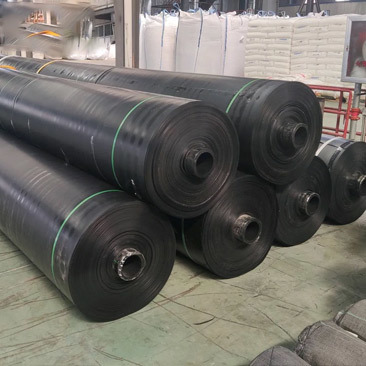Understanding Composite Geomembranes: A Key Element in Construction and Environmental Protection
Release time:
2025-09-23
Composite geomembranes are engineered materials designed to provide effective barriers against water and contaminants in various construction applications. These membranes typically consist of a combination of geosynthetic materials, including a polymeric film, and are often reinforced with other materials to enhance their strength and durability. The unique composition of composite geomembranes a
Composite geomembranes are engineered materials designed to provide effective barriers against water and contaminants in various construction applications. These membranes typically consist of a combination of geosynthetic materials, including a polymeric film, and are often reinforced with other materials to enhance their strength and durability. The unique composition of composite geomembranes allows them to exhibit exceptional resistance to punctures, tears, and environmental factors such as UV radiation and chemical exposure.
One of the primary applications of composite geomembranes is in landfills, where they serve as a protective barrier to prevent leachate from contaminating surrounding soil and groundwater. This is essential for maintaining environmental safety and compliance with regulatory standards. Additionally, composite geomembranes are widely used in hydraulic structures, such as ponds and reservoirs, to minimize water loss and control seepage.
Another significant application is in the construction of tunnels and underground structures, where composite geomembranes can be employed to manage groundwater and provide waterproofing solutions. Their excellent flexibility and adaptability make them suitable for various terrains and conditions, ensuring reliable performance in challenging environments.
Moreover, composite geomembranes are increasingly recognized for their role in sustainable construction practices. By preventing contamination and managing water resources effectively, they contribute to the overall environmental stewardship of construction projects. This is particularly important as industries strive to meet stricter environmental regulations and societal expectations regarding sustainability.
When selecting composite geomembranes for a project, several factors must be considered, including the specific environmental conditions, the type of contaminants expected, and the mechanical requirements of the application. Consulting with experts in geosynthetics can provide valuable insights into the most appropriate materials and design strategies to achieve optimal results.
In summary, composite geomembranes are vital components in the construction and environmental management sectors. Their ability to provide robust barriers against pollutants, combined with their versatility across various applications, makes them indispensable in modern engineering solutions. Understanding the significance of composite geomembranes can help stakeholders make informed decisions that enhance the safety and sustainability of their projects while protecting valuable natural resources.
One of the primary applications of composite geomembranes is in landfills, where they serve as a protective barrier to prevent leachate from contaminating surrounding soil and groundwater. This is essential for maintaining environmental safety and compliance with regulatory standards. Additionally, composite geomembranes are widely used in hydraulic structures, such as ponds and reservoirs, to minimize water loss and control seepage.
Another significant application is in the construction of tunnels and underground structures, where composite geomembranes can be employed to manage groundwater and provide waterproofing solutions. Their excellent flexibility and adaptability make them suitable for various terrains and conditions, ensuring reliable performance in challenging environments.
Moreover, composite geomembranes are increasingly recognized for their role in sustainable construction practices. By preventing contamination and managing water resources effectively, they contribute to the overall environmental stewardship of construction projects. This is particularly important as industries strive to meet stricter environmental regulations and societal expectations regarding sustainability.
When selecting composite geomembranes for a project, several factors must be considered, including the specific environmental conditions, the type of contaminants expected, and the mechanical requirements of the application. Consulting with experts in geosynthetics can provide valuable insights into the most appropriate materials and design strategies to achieve optimal results.
In summary, composite geomembranes are vital components in the construction and environmental management sectors. Their ability to provide robust barriers against pollutants, combined with their versatility across various applications, makes them indispensable in modern engineering solutions. Understanding the significance of composite geomembranes can help stakeholders make informed decisions that enhance the safety and sustainability of their projects while protecting valuable natural resources.






